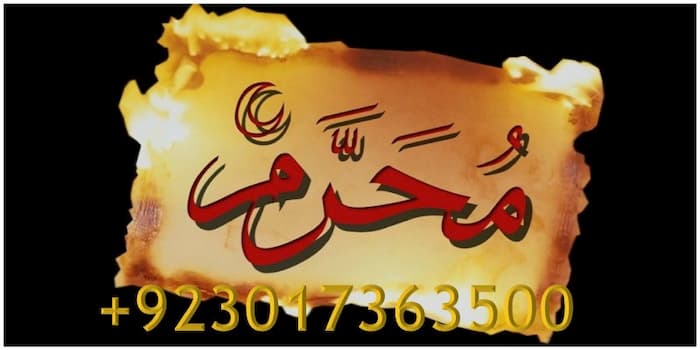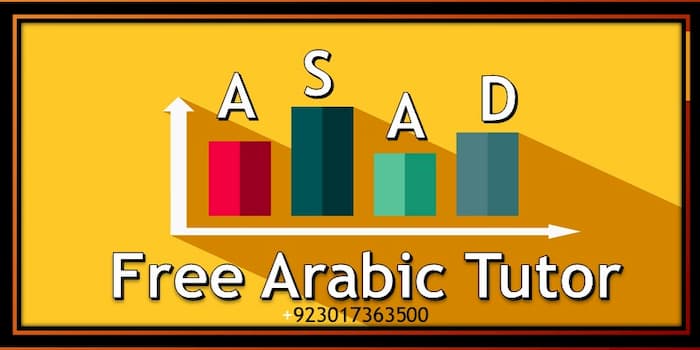Dear Users, You know The Islamic calendar (Hijri calendar) is a purely lunar calendar. It has the 12 months that are based on the motion of the moon (movement of the moon around the earth) and because 12 synodic months is only 12 x 29.53=354.36 days, the hijri calendar is consistently shorter than a tropical year, and so that it shifts with respect to the Christian calendar (orthodox calendar). Dear Student in this Article we will discuss about Hijri Calendar 1440 | List of Hijri Months.
The Hijri Calendar 1440 is based on the Qur’an Pak (Sura IX, 36-37) and its proper observance is a sacred duty for Muslims. The Islamic calendar is the official calendar in countries around the Gulf (UAE), especially State Saudi Arabia. But the other countries use the Gregorian calendar for civil purposes and only turn to the Islamic calendar for religious purposes.
Dear Students There are 12 months in the Islamic calendar. List of Hijri Months are as follows:
- Muharram
- Safar
- Rabiul Auwwal
- Rabius Sani
- Jamadial Auwwal
- Jamadius Sani
- Rajab
- Shaban
- Ramadan
- Shawwal
- Zil Qad
- Zil Hijja (month of Hajj)
Muslims rely on the Hijri Calendar 1440 that is comprises on twelve distinct months. These 12 months have their own importance and significance. Each month has some important events that are obligatory for the Muslims to follow while some events are only for the extra rewards and benefits from ALLAH.

Please Follow for unlimited access. Click Here.
- All Arabic letters flash cards pdf Free Download
- All Pilgrimage worksheets For Kids Free Download
- Arabic grammar for Beginners worksheets Download
- Islamic studies worksheets for grade 1 Free Download
- All Arabic all alphabet worksheets tracing Free Download
Moreover, all the twelve Islamic months are observed according to the position and phases of the moon. Here is the list of each Islamic Months along with their brief details. Dear Users You will can download here Arabic Calendar 1440, Arabic Calendar 1440, Arabic month list and Arabic months name list free of cost Thanks
1.Muharram
Muharram is the first Islamic month and its meaning is Forbidden. This month is really significant for the Muslims as this month contains various benefits and blessings. It has some scared events among them 1st Muhraam has very importance because it is the beginning of a new year and the martyrdom of Hazrat Umar Farooq (RA). Like this 10th Muhraam is also very special Islamic day as it is Youm-e-Ashura. Hazrat Imam Hussain (RA) and his companions also martyred in Karbala on the same day. Holy Prophet (Peace Be Upon Him) said fast on this day because when Muslim fast Allah will forgive all past sins.
Prior To Islam
- Prophet Adam (pbuh) was also born and will be entered the Paradise on 10th of Muharram.
- Prophet Ayyub (pbuh) was cured from his illness.
- Prophet Suleman (pbuh) was ordained King.
- The oceans and heavens were created. (Tanbihul-Gaafileen)
During Islam:
- Hadhrat Hussain (R.A.) was martyred in this month. was revealed on the 10th of Muharram.
- Qiyaamah will take place on the 10th of Muharram.

Is Muharram Talibiddeen PDF download
Muharram worksheet-1440 hijri
The Month of Muharram-1440 hijri
2.Safar
2.Safar This Islamic month has its own significance, Safar means “Whistling Wind” because when this month it was windy atmosphere. On 20 Safar, Shia Muslims observe the Arbaeen or Chehlum of Hazrat Ibn Ali (R.A) on , 27th of Safar Hazrat Muhammad Mustafa (Peace be Upon Him) migrated from Makah to Medina and so on.
Events:
- The Battle of Khaibar took place in the year 7 A.H.
- Hadhrat Ali (R A ) married Prophet daughter Hadhrat Fatima (R.A.) in the latter days of Safar 2 A.H.
- Khubaib Ibn Adey (R.A.) was martyred in Safar in the year 4 A.H. in Makkah.
- Zaid Ibn Dathina (RA) was martyred in this month in the year 4 A.H. in Makkah.
Ṣafar (Arabic صَفَر) -1440 hijri calendar
3.Rabi-ul-Awwal
Rabbi-ul-Awwal is come after the Safar and this month is very beautiful because on 12 Rabi-ul-Awwal our beloved Holy Messenger (Peace Be Upon Him) was born and the whole month is very blissful.
Events:
- The Holy Prophet was born in this month as mercy for all and departed from this world 63 years later.
- The Holy Prophet migrated from Makkah to Madinah Munawwarah.
- Battle of Buwaat took place in the year 2 A.H.
- Battle of Saf’vaan took place in the year 2 A.H.
- Abu Bakr’s (R. A) daughter, was born 6 years before Prophecy.
- Abu Bakr (RA.) was appointed Caliph.
- Wife of the Holy Prophet Zainab (RA.) passed away in the year 4 A.H.
- Ibrahim (RA.) the son of Maaria Qibtiya & of the Holy Prophet passed away in the year 10 A.H.
Is the 12th of Rabi Prophet’s birthday
Rabī’ al-Awwal History -1440 hijri calendar
Rabi ul Awal 2020-1440 hijri calendar
The Benefits of Rabi’-ul-Awwal its Significance
The significance of the 12th of Rabi al-Awwal
4.Rabi-us Sani
4.Rabi-us Sani is coming when the Rabbi-ul-Awwal is on ending that’s why it contains Rabi in the name and also considered as Rabi-ul-Akhir. In this month the continuous reciting of Holy Quran and Wird of Astaghfar and nafil prayers are very much essential.
Events:
- Battle of Furu’ from Buhraan took place in 3 A.H Sariyyah-Battle in which the Holy Prophet did not take part in,
- Hadrat Khwaja Nizamuddin- 18th Rabi-ul-Akhir: 725 Hijri. Abdul Qadir Jilanee- 11th Rabi-ul-akhir: 561 Hijri passed away at the age of 90 Year..
Fourth Islamic Month Rabi al-Thani
Rabi al Aakhir-1440 hijri calendar
Rabi’ al-Thani history -1440 hijri calendar
Jamadi-ul-Awwal
Jamadi-ul-Awwal On 15th Jamadi-ul-Awwal Hazrat Ali R.A was born and many other significant events had taken placed. This month contains various virtues as Allah will give various rewards.
Deaths:
- Abdullah Ibn Rawaahah met martyrdom in 8 A.H.
- Abdullah Ibn Uthman (R.A.) passed away.
Jumad-1-1440 hijri calendar PDF
9.Ramadan
9.Ramadan: In this month the fasting is permitted to the Muslims through the whole month. This month has numerous blessings and Allah will save the Muslim from the fire of hell and also forgive the sins.
Deaths:
- Hadhrat Khadijah (R.A), wife of the Holy prophet departed from this world on the 11th of Ramadan in the year 10 A.H.
- Hadrat Fatimah (R.A) took leave from the world on a Tuesday 3rd Ramadan in the year 11 A.H.
- Hadrat Abbas (R.A.) the Holy Prophet uncle passed away on a Friday 12th Ramadan in the year 32 A.H at the age of 88
- Hadhrat Aa’ishah (R.A.) was 65 years old when she departed in the year 58 A.H.
Ramadan -1440 hijri calendar PDF
10.Shawal
10.Shawal:This is the month when the event Eid-ul fitr has arrived and it is necessary to follow this event. This month has its own importance and Allah will shower several blessings.
Events:
- Hadhrat Aa’ishah Siddiqah (R.A) was born in Shawwal, 4 years after Prophethood and 9 years before Hijrah.
- Hadhrat Aa’ishah Siddiqah (R.A.) was married to Holy Prophet in Shawwal, 10 years after Prophethood which is 3 years before Hijrah.
- The fight between Banu Qaynaqaa took place between the battle of Badr and Uhud, Shawwal 2 A.H. after Hijrah.
- Hadhrat Hussain (R.A) Holy Prophet’s grandson (son of Hadhrat Fatima R.A.) was born in the month of Shawwaal 4 years after Hijrah.
- The Holy Prophet’s uncle Abu Talib departed from this world in the middle of Shawwal in the year 5 A.H.
Shawwal (Arabic شَوَّال, -1440 hijri calendar
11.Zil-Qada
11.Zil-Qada:This month is also very important for the Muslims and it comes after the Shawal. Fasting and Nafil in this month is highly significant.
Events:
- The battle of ‘khandaq (trench) or Ahzab’ took place in the year 5 A.H.
- In the year 6 A.H.-Truce of Hudaubiyah.
- In the year 6 A.H ‘Bay’at-e-Rizwaan’ (The oath of allegiance named Rizwaan).
- The return to Makkah for Umrah by Holy Prophet and his Companions in the year 7 A.H.
Dhulqadah Arabic Calendar PDF download
12.Zul-Hijah
12.Zul-Hijah:This is the last Islamic month and it has several importance as on this month the Hajj performed and second Muslim festival occurred that is Eid-ul-Adha. Thereby, it has very important and full with blessings.
Events:
- The Prophet performed the farewell Hajj and gave the historic sermon known as the “Farewell Sermon”
- Uthmaan (R.A.) was appointed the third Caliph
- “Bay’ate-Aqabah”
- Hadhrat Fatimah (R.A.) was married in this holy month to the fourth Caliph Hadhrat Ali (R.A.)

What does an Islamic year look like?
The names of the 12 months that comprise the Islamic year are:
- Muharram
- Safar
- Rabi’ al-awwal (Rabi’ I)
- Rabi’ al-thani (Rabi’ II)
- Jumada al-awwal (Jumada I)
- Jumada al-thani (Jumada II)
- Rajab
- Sha’ban
- Ramadan
- Shawwal
- Dhu al-Qi’dah
- Dhu al-Hijjah
Names of the days of the week
Dear Students the Islamic week is derived from the Jewish week, as was the medieval Christian week, all of which have numbered weekdays in common. The Islamic and Jewish weekdays start at sunset, whereas the medieval Christian and planetary weekdays begin at the following midnight. Muslims comes for worship at a Masjid at noon on “gathering day”, which corresponds to the sixth day of the Jewish and medieval Christian weeks, and to Friday of the planetary week. Here the name days of week in Arabic
- yaum as-sabt يوم السَّبْت (sabbath day – Saturday) (Urdu, ہفتہ) (Persian: Shambeh, شنبه)
- yaum al-ahad يوم الأحد (first day – Sunday) (Urdu, اتوار) (Persian: Yek-Shambeh یکشنبه)
- yaum al-ithnayn يوم الإثنين (second day – Monday) (Urdu, پير) (Persian: Do-Shambeh, دوشنبه)
- yaum ath-thalatha’ يوم الثُّلَاثاء (third day – Tuesday) (Urdu, منگل) (Persian: Seh-Shambeh, سه شنبه)
- yaum al-arba`a’ يوم الأَرْبعاء (fourth day – Wednesday) (Urdu, بدھ) (Persian: Chahar-Shambeh, چهارشنبه)
- yaum al-khamis يوم الخَمِيس (fifth day – Thursday) (Urdu, جمعرات) (Persian: Panj-Shambeh, پنجشنبه)
- yaum al-jum`a يوم الجُمْعَة (gathering day – Friday) (Urdu, جمعہ) … (Persian: Jom’eh, جمعه or Adineh آدينه)
Important dates and Important days of the Year
Important dates in the Islamic (Hijri) year are:
- 1 Muharram (Islamic New Year)
- 9 & 10 Muharram
- 12 Rabiul Awal (Milad un Nabi)
- 27 Rajab (Isra and Miraj)
- 15 Shabaan (Shab-e-Br’aat)
- 1 Ramadan (first day of fasting)
- 1 Shawwal (Eid ul-Fitr)
- 8-10 Dhu al-Hijjah (the Hajj to Makkah)
- 10 Dhu al-Hijjah (Eid ul-Adha).
- 27 Ramadan (Nuzul Al-Qur’an) (17 Ramadan in Malaysia)
- Last 10 days of Ramadhan which may include Laylat al-Qadr
- 21 Ramadan (Imam Ali ibn Abi Talib’s death date. He was Mohammad’s cousin and son in law and the father of Imam Husayn ibn Ali)
Current correlations
For a very common conversion, multiply the Islamic year number by 0.97, and then add 622 to get the Gregorian year number. The Islamic and Gregorian years will have the same number in 20874. The Islamic calendar year of 1429 occurs all within the Gregorian calendar year of 2008 (Gregorian Year). So that years occur once every 33 or 34 Islamic years (32 or 33 Gregorian years). More are listed here:
What is Leap Years?
Leap Years: In non-leap years, a month would be 29.5 days. Need to add 11 days in each 30-year cycle to account for a month being longer than that There are four different pattens of leap years in use for specifying which year in the cycle is a leap year.
These are designated as Type I, Type II, Type III, and Type IV
- Type I: 2, 5, 7, 10, 13, 15, 18, 21, 24, 26, 29
- Type II: 2, 5, 7, 10, 13, 16, 18, 21, 24, 26, 29
- Type III: 2, 5, 8, 10, 13, 16, 19, 21, 24, 27, 29
- Type IV: 2, 5, 8, 11, 13, 16, 19, 21, 24, 26, 30
Origin
There are two different origins in use for 1 Muharram in the year 1. These are designated as the astronomical origin and the civil one
Astronomical Origin:
- =1 Muharram year 1
- = July 15, 622 (Julian Calendar)
- = July 18, 622 (Gregorian Calendar)
- = Ab 2, 4382 (Hebrew Calendar)
Civil Origin:
- =1 Muharram year 1
- = July 16, 622 (Julian Calendar)
- = July 19, 622 (Gregorian Calendar)
- = Ab 3, 4382 (Hebrew Calendar)
Muslim Calendar Month versus Jewish Calendar Month That the Jewish Calendar and the Muslim Calendar have the months tied to the moon. So how do the lengths of a month in the two calendars compare? You know that The Jewish month is defined to be 29 days, 12 hours, 793 halaqim. where a haliq is 1/1080 of an hour
Based on that, the length of each year is dynamically adjusted so that the start of each year does not drift from the computed start of the first month in the year
The length of a Muslim month is computed as follows:
You know that A common year is 6 months of 30 days and 6 of 29 days for a total of 354 days
A leap year has an added day, and there are 11 leap years in every 30 year cycle, So 30 years = 354*30+11 = 10631 days, Since every year has 12 months, 30 years = 30*12 = 360 months. Therefore 360 months = 10631 days which means
- 1 month has = 10631/360 days = 29 + 191/360 days
- = 29 days + (191/360)*24 hours = 29 days + 191/15 hours
- = 29 days + 12 11/15 hours = 29 days + 12 hours + (11/15)*1080 halaqim
- = 29 days + 12 hours + 792 halaqim
AS a Result: The Jewish Month and the Muslim Month change by 1 haliq, or 3 1/3 seconds
Each month starts when the lunar crescent is first seen (by a human observer’s eye) after a new moon. So that new moons may be calculated quite precisely, the actual visibility of the crescent is much more difficult to predict. It depends on factors such as weather, the optical properties of the atmosphere, and the location of the observer. Furthermore, some Muslims depend on a local sighting of the moon, whereas others depend on a sighting by authorities somewhere in the Muslim world.
So you can’t print an Islamic calendar in advance?
Not a reliable one. However, Hijri Calendar 1440 are printed for planning purposes, but such Hijri Calendar 1440 are based on estimates of the visibility of the lunar crescent, and the actual month may start a day earlier or later than predicted in the printed calendar.
Different methods for estimating the calendars are used.
Some sources mention a crude system in which all odd numbered months have 30 days and all even numbered months have 29 days with an extra day added to the last month in ‘leap years’ Leap years could then be years in which the number year mod 30 is one of the following: 2, 5, 7, 10, 13, 16, 18, 21, 24, 26, or 29.
Such a calendar would give an average month length of 29.53056 days, which is quite close to the synodic month of 29.53059 days, so on the average it would be quite accurate, but in any given month it is still just a rough estimate. Better algorithms for estimating the visibility of the new moon have been devised.
When will the Islamic calendar overtake the Gregorian calendar?
As the year in the Islamic calendar is about 11 days shorter than the year in the Christian calendar, the Islamic years are slowly gaining in on the Christian years. But it will be many years before the two coincide. The 1st day of the 5th month of C.E. 20874 in the Gregorian calendar will also be (approximately) the 1st day of the 5th month of AH 20874 of the Islamic calendar.
Doesn’t Saudi Arabia have special rules?
For civil purposes, Saudi Arabia doesn’t rely on a visual sighting of the crescent moon to fix the start of a new month. Instead they base their calendar on a calculated astronomical moon. Since 2002 (AH 1423) the rule has been as follows: If on the 29th day of an Islamic month,
- the geocentric conjunction (that is, the new moon as seen from the center of the earth) occurs before sunset, and
- The moon sets after the sun, Dear Student then the next day will be the first of a new month; otherwise the next day will be the last (30th) of the current month.
EXTRA PDF Hijri Months
Arabic Calendar Islamic – Arabic calendar
List of the Names-of-Hijri-Islamic Months
Muharram- Activity pack- Arabic calendar
هلال الخير – رزنامة +logo – Arabic calendar
GENERAL WORKSHEETS
Arabic Calendar Activity – Arabic calendar
Arabic Calendar Reference Kids
Create your own Islamic calendar PDF download
Daily Hijri Practice Worksheets PDF
Hijri Calendar bw Islamic Bulletin
Hijri Month Headers Color Worksheets
Hijri Perpetual Calendars
Hijri Calendar bulletin Board PDF
Islamic Months Activity Mini book PDF
Islamic Months Colour Code Activity
Islamic Calendar-Arabic colored PDF
Meaning of the islamic Month PDF download
Months of Islam PDF Free download
My Islamic Calendar Colouring PDF
About QuranMualim
Dear Students and Most Honorable that The times for the setting of the sun and the moon are calculated for the coordinates of Mecca. Start a Free Trial Class of Hafiz, Tajweed 1eed, Nazra Quran and Advance Learners. It’s free, flexible, and fantastic. So, avail an exclusive opportunity to see how we teach our students effectively. Contact us via Gmail: hdhuddi @ gmail.com and get a free trial class at your desired time. WhatsApp: +923017363500
Ask Question
We seek to promote the Islamic concept of ijma’, that is building knowledge and understanding through enlightened debate. If you are a scholar, Thinker, Writer, a journalist, a blogger, V Logger or just have something to say and want your voice heard by the wider Muslim community, please get in touch with us. www.Quranmualim.com
Conclusion
This Article Hijri Calendar was written by Hafiz Abdul Hameed. Dear Respected Users, these are some of our findings when we analyzed the content that performed well on Facebook Page: Alasad Online Quran Tutor, LinkedIn, Twitter, and Pinterest.
Do you have any tips or unique ideas, Valuable Suggestions on creating content for any of these social networks or websites? Please Share Your valuable thoughts in the comments below. We will be thankful to You for this good act. With Best Wishes. Regards. Hafiz Abdul Hameed Pakpattan Pakistan.
Our Android Apps
About CEO Al-Asad Online
Hafiz Abdul Hameed
Master In Islamic Studies
(Tajweed, Waqf)
Web Developer/Administrator
Web Content Writer
Blogger, SEO Expert
Graphic Designer
WhatsApp: +92 3017363500














